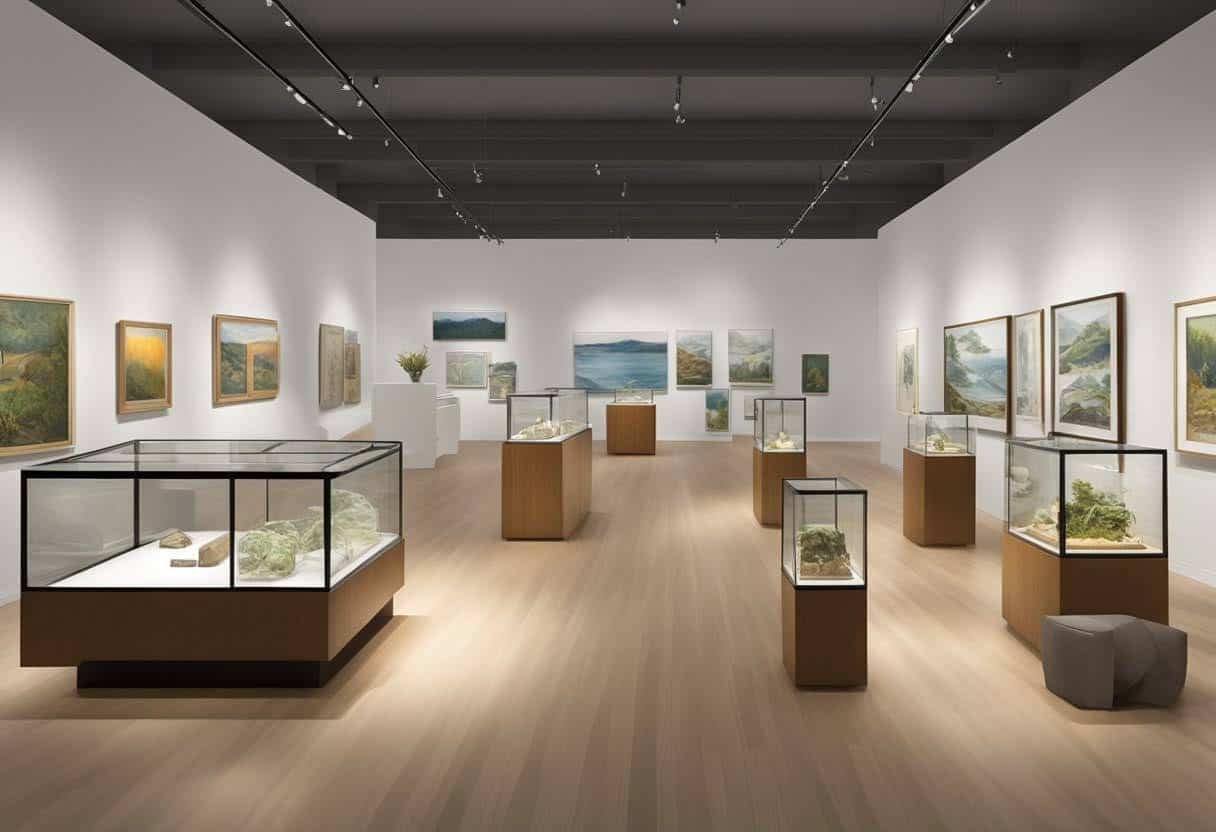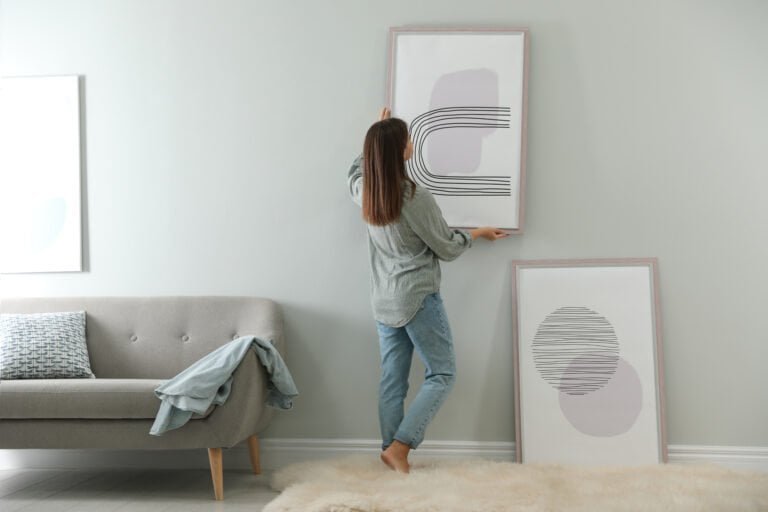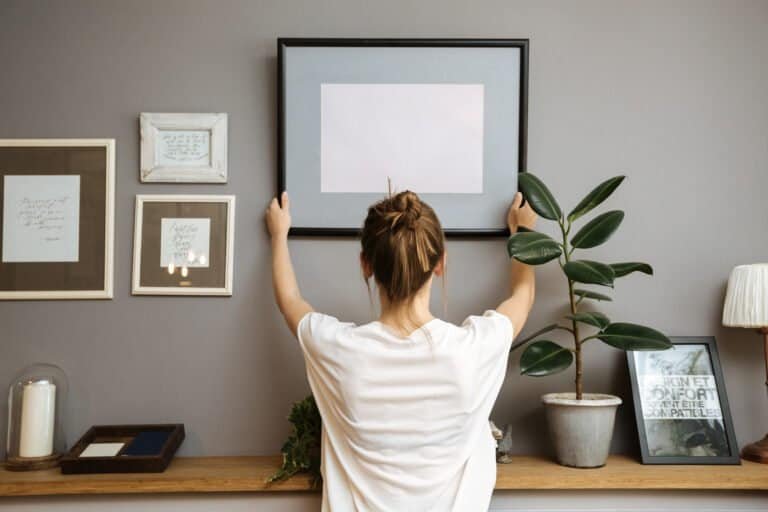A Guide to Art Preservation: Essential Techniques for Long-Term Artwork Protection
Art preservation is a crucial aspect of maintaining the beauty and value of artwork over time. Collectors and art enthusiasts alike can benefit from learning proper techniques to keep their pieces in top condition.
Proper care and storage methods can significantly extend the life of paintings, sculptures, and other artistic creations.
Environmental factors play a big role in art preservation. Temperature, humidity, and light exposure can all impact the longevity of artwork.
By controlling these elements, art owners can help prevent damage and deterioration.
Regular maintenance is key to keeping art in good shape. This includes gentle cleaning, inspections for signs of wear, and addressing any issues promptly.
With the right knowledge and tools, anyone can take steps to preserve their art collection for years to come.
Key Takeaways
- Control temperature, humidity, and light to protect artwork
- Regular cleaning and inspections help maintain art condition
- Proper handling and storage techniques prevent damage to art pieces
Understanding Art Preservation and Conservation

Art preservation and conservation protect valuable cultural artifacts for future generations. These practices maintain the physical integrity and historical significance of artworks, ensuring they can be studied and appreciated for years to come.
The Importance of Preservation for Cultural Heritage
Preservation safeguards art from deterioration and damage. It helps maintain the original materials and appearance of artworks.
This process is crucial for protecting cultural heritage.
Proper preservation techniques slow down natural aging processes. They shield art from harmful environmental factors like light, humidity, and temperature changes.
These methods also guard against pests and pollutants.
Preservation allows future generations to experience art in its intended form. It keeps the artist’s vision intact and preserves the historical context of each piece.
This practice is essential for museums, galleries, and private collectors.
Differences Between Preservation, Conservation, and Restoration
Preservation focuses on preventing damage and decay. It involves controlling the environment around artworks.
Conservation aims to stabilize and maintain existing conditions. It addresses current issues without altering the original work.
Restoration involves repairing damage and returning art to its original state.
This process can include cleaning, repairing, or replacing damaged parts.
Restoration is more invasive than preservation or conservation.
These practices require different skills and approaches. Preservation is ongoing, while conservation and restoration are typically performed as needed.
Each plays a unique role in maintaining art collections.
Historical Significance and Cultural Legacy
Art preservation protects objects that represent cultural heritage. These items hold historical value and provide insights into past societies.
Preserved artworks serve as tangible links to history.
Well-preserved art allows researchers to study historical techniques and materials. This knowledge aids in understanding artistic developments over time.
It also helps in dating and authenticating other artworks.
Preserved art contributes to cultural identity and national pride. It educates people about their heritage and promotes cultural understanding.
By maintaining these treasures, we ensure that future generations can learn from and enjoy them.
Assessing the Condition of Artwork

Evaluating the state of an artwork is crucial for proper preservation. It involves careful examination and analysis using various techniques to understand the piece’s current condition and history.
Documentation and Record Keeping
Keeping detailed records is vital for artwork preservation. Artists and collectors should create a file for each piece, including:
- Photos of the front, back, and any damaged areas
- Purchase date and price
- Artist information
- Materials used
- Size and weight
- Restoration history
Regular condition reports help track changes over time. These reports should note any cracks, discoloration, or other issues.
Updating records after cleaning or repairs is important.
Technical Analysis and Diagnostics
Advanced tools help assess artwork condition beyond visual inspection. Some key methods include:
- Infrared reflectography: Reveals underdrawings and changes in paintings
- X-ray fluorescence analysis: Identifies pigments and materials used
- Ultraviolet light: Shows previous restorations and varnish layers
These techniques provide valuable insights into an artwork’s structure and composition. They can detect hidden damage or alterations not visible to the naked eye.
Experts use this data to create treatment plans and make informed decisions about preservation methods.
Regular technical analysis helps monitor artwork condition over time.
Environmental Control and Climate Management

Proper environmental control is crucial for preserving artwork. The right conditions can prevent damage and extend the life of paintings, sculptures, and other art pieces.
Preventing Damage from Direct Sunlight
Direct sunlight can harm artwork quickly. It causes fading and material breakdown.
Place art away from windows or use UV-filtering glass. Rotate displayed pieces regularly to limit sun exposure.
Consider using light-blocking curtains or shades on windows near art.
Sunlight also heats up rooms, which can dry out some art materials.
Keep an eye on room temperatures near sunny areas. Move sensitive pieces to cooler spots if needed.
Optimizing Humidity and Temperature
Stable humidity and temperature are key for art preservation.
Aim for 45-55% relative humidity and 65-70°F (18-21°C). Use a hygrometer to check humidity levels.
Add a dehumidifier in damp areas or a humidifier in dry spaces.
Avoid hanging art on outside walls or near heating vents. These areas often have more temperature swings.
Use climate control systems to keep conditions steady. Check settings regularly and adjust as needed.
Choosing the Right Lighting and UV Protection
Good lighting shows off art while protecting it.
Use LED lights, which give off less heat and UV rays. Aim lights at walls instead of directly at artwork. This reduces glare and harmful rays.
Install UV filters on light fixtures near art. These block damaging rays while still allowing visible light through.
For extra sensitive pieces, use special UV-protective glass or acrylic in frames. This blocks up to 99% of UV rays.
Limit light exposure time for delicate art. Use timers on gallery lights or cover pieces when not on display.
This extra step can greatly extend the life of your art collection.
Storage Solutions for Art Preservation

Proper storage is key to keeping artwork safe and in good condition. The right materials and methods can protect pieces from damage and decay.
Selecting Archival-Quality Materials for Storage
Archival-quality materials are essential for art storage. These items are acid-free and won’t harm artwork over time.
Use acid-free boxes, folders, and tissue paper to wrap pieces. Look for storage containers made of stable plastics like polyethylene or polypropylene.
Avoid regular cardboard boxes or plastic bags, which can trap moisture and cause damage.
Silica gel packets help control humidity inside storage boxes.
Place these moisture-absorbing packets in with artwork to keep the environment dry. Replace them every few months to maintain their effectiveness.
For framed art, use corner protectors made of acid-free materials. These guard against bumps and scratches during storage or moves.
Storing Artwork to Prevent Physical Damage
Proper handling and placement prevents physical harm to art.
Store paintings upright, not flat, to avoid pressure on the canvas. Use padded dividers between pieces to stop them from touching.
Keep artwork off the floor to protect from water damage. Use shelves or racks designed for art storage.
Make sure shelves are sturdy and can hold the weight of the pieces.
Roll large, unframed works on acid-free tubes. Cover the rolled artwork with acid-free paper or fabric. Store tubes horizontally to prevent warping.
Avoid areas with big temperature changes. Basements and attics are often too damp or hot for art storage.
Special Considerations for Three-Dimensional Artworks
Three-dimensional art needs extra care in storage.
Wrap sculptures in acid-free tissue or bubble wrap. Use custom-fit boxes for oddly shaped items.
Support fragile parts with foam blocks or acid-free padding. This stops pieces from shifting and breaking during storage or moves.
Store heavy sculptures on low, sturdy shelves. Use dollies or lifts when moving large pieces to prevent drops or strain.
For mixed media art, consider each material’s needs. Some may need special wrapping or climate control. Ask an art expert if unsure about the best storage method for complex pieces.
Maintenance and Care of Artwork

Proper care and maintenance are vital for preserving artwork over time. Regular cleaning, expert consultations, and ongoing upkeep help protect pieces from damage and deterioration.
Regular Cleaning and Dusting Practices
Gentle cleaning keeps artwork in good condition.
Use soft, lint-free cloths or brushes to remove dust weekly. Avoid harsh chemicals or water on paintings and drawings.
For sculptures, lightly dust with a soft brush.
Clean frames and glass with a slightly damp cloth, but don’t let moisture touch the art.
Always work carefully to prevent accidental damage.
Never attempt to clean valuable or delicate pieces yourself. Leave those to professionals who have the right tools and expertise.
When to Consult Conservation Experts
Professional conservators should handle significant cleaning or repairs. Seek their help for:
- Visible damage like tears, cracks, or flaking
- Discoloration or fading
- Warping or other structural issues
- Mold or pest infestations
- Valuable or historically important pieces
Conservators can assess condition, perform treatments, and give advice on proper care.
They use specialized techniques to clean and restore artwork safely.
Regular check-ups with experts can catch problems early before they worsen.
Ongoing Maintenance for Art Preservation
Consistent care helps artwork last longer.
Control the environment where art is displayed or stored.
Keep temperature steady between 65-70°F (18-21°C) and humidity around 50%.
Limit light exposure, especially for delicate pieces.
Use UV-filtering glass in frames and avoid direct sunlight.
Rotate displayed works periodically to prevent uneven fading.
Handle artwork carefully using clean, dry hands or gloves.
Use proper storage materials like acid-free boxes and tissue paper.
Inspect pieces regularly for signs of damage or decay.
Keep good records of each artwork’s condition and any treatments done.
This history helps track changes over time and guides future care decisions.
Techniques for Art Stabilization and Repair

Art preservation requires careful handling and specialized methods. Professionals use various techniques to stabilize and repair artwork, ensuring its longevity and beauty.
Inpainting and Color Retouching
Inpainting fixes areas of paint loss on artwork. Conservators carefully match colors and textures to blend repairs seamlessly. They use reversible materials that don’t damage the original art.
Color retouching fixes faded or discolored areas. Experts apply thin layers of paint to restore vibrancy. They choose stable pigments that won’t change over time.
These methods need a steady hand and expert eye. Conservators study the artist’s technique to recreate brushstrokes and style accurately.
Repairing Tears and Structural Compromises
Tears in canvas or paper art need quick action. Conservators use special adhesives and backing materials to mend rips. They work from the back of the piece when possible.
For severe damage, experts may transfer the art to a new support. This complex process preserves the painted surface while replacing the damaged backing.
Warped frames or loose joints in sculptures also need fixing. Conservators use custom-made tools and gentle pressure to reshape items. They may add hidden supports to prevent future issues.
Laser Cleaning and Other Advanced Methods
Laser cleaning removes dirt and grime without touching the art. The laser vaporizes surface dirt while leaving paint intact. It works well on delicate surfaces like gilding.
Other high-tech methods include x-ray imaging to see hidden damage. Ultraviolet light reveals past repairs and helps guide new work.
Some labs use 3D printing to recreate missing parts of sculptures. They scan the object and print an exact match using durable materials.
These advanced techniques let experts tackle tough preservation challenges. They combine cutting-edge tech with traditional skills to save priceless art.
Handling, Framing, and Displaying Art

Proper care when handling, framing, and displaying art is key to preserving its value and beauty over time. These practices protect artwork from damage and environmental factors.
Best Practices for Art Handling and Transportation
Always wear clean, lint-free gloves when handling art to avoid transferring oils or dirt. Use both hands to support the artwork evenly. For large pieces, get help from another person.
When moving art, use sturdy boxes or crates designed for artwork. Wrap paintings in acid-free tissue paper or bubble wrap. Place foam corners on frames for extra protection.
For shipping, use a reputable art transportation company. They have specialized vehicles and packing materials to keep art safe during transit.
Ensuring Proper Framing and Mounting
Choose frames made from acid-free materials to prevent damage over time. Use UV-protective glass or acrylic to shield art from harmful light.
Mount artwork using archival-quality mats and backing boards. This prevents direct contact between the art and frame, reducing the risk of damage.
For works on paper, use hinging techniques with archival tape. This allows the art to expand and contract with humidity changes without warping.
Display Options to Protect Artwork
Hang art away from direct sunlight, heat sources, and areas with high humidity. Use picture lights with low UV output to illuminate pieces safely.
Install paintings slightly away from walls to allow air circulation. This helps prevent mold growth behind frames.
For delicate works, consider display cases with controlled environments. These protect art from dust, fluctuating temperatures, and excess handling.
Rotate displayed art periodically to limit exposure to light and environmental factors. Store pieces not on display in a cool, dry place using archival storage methods.
Insurance and Valuation of Art

Protecting valuable artwork requires proper insurance coverage and accurate valuation. These steps help safeguard art investments and ensure fair compensation if damage or loss occurs.
Appraisals and Valuation for Insurance Purposes
Getting an art appraisal is key for insurance. A qualified appraiser examines the artwork and determines its value. This process takes into account:
- The artist’s reputation
- The artwork’s condition
- Its rarity and uniqueness
- Recent sales of similar pieces
Appraisals should be updated every few years. Art values can change over time due to market trends or an artist’s growing fame. Insurance companies use these valuations to set coverage limits and premiums.
Protecting Art Investments
Art insurance offers financial protection for collectors. Standard homeowners policies often have limits for art coverage. Specialized art insurance provides:
- Higher coverage limits
- Protection during transit
- Coverage for damage from natural disasters
Collectors should keep detailed records of their art. This includes:
- Photos of each piece
- Receipts and certificates of authenticity
- Appraisal documents
These records help in case of theft or damage claims. They also make it easier to update insurance coverage as needed.
Modern Techniques in Art Conservation

Art preservation has advanced significantly with new technologies and methods. These innovations allow conservators to protect and restore artworks more effectively than ever before.
Digital Preservation and Archiving
Digital tools play a key role in preserving art for future generations. High-resolution scanning creates detailed digital copies of paintings and sculptures. These scans capture every brushstroke and surface texture. Museums use this data to track changes in artworks over time.
3D modeling helps conserve sculptures and architectural elements. These models provide exact measurements for repairs or recreations if needed. Virtual reality allows people to “visit” fragile sites without risking damage to cultural treasures.
Cloud storage keeps digital archives safe from physical threats. This protects important records even if the original artwork is lost or damaged.
Cutting-Edge Tools for Art Conservation
New devices give conservators deeper insights into artworks. X-ray fluorescence scanners reveal hidden paint layers and materials. This helps identify forgeries and guide restoration work.
Laser cleaning removes dirt and grime without damaging delicate surfaces. It’s safer than traditional chemical cleaners for many objects.
Climate control systems maintain ideal temperature and humidity levels. This slows decay and prevents cracking or warping in paintings and sculptures.
Nanotechnology creates protective coatings for artworks. These thin layers shield against UV light and environmental damage.
Case Studies in Conservation Projects
The Ghent Altarpiece restoration shows how modern techniques can save priceless art. Experts used special cameras to guide their work on this 15th-century masterpiece. They removed old varnish and revealed hidden details.
At Pompeii, drones map the ancient city to track erosion and plan repairs. 3D printing helps create supports for crumbling walls and columns.
The Mona Lisa benefits from a high-tech display case. It controls light, temperature, and humidity to keep the painting stable. Sensors alert staff to any changes that might threaten the artwork.








